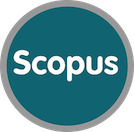Online Submissions
Already have a Username/Password for Jurnal Hukum Novelty?
Go to Login
Need a Username/Password?
Go to Registration
Registration and login are required to submit items online and to check the status of current submissions.
Author Guidelines
A. General Requirements
The minimum standard requirements of Jurnal Hukum Novelty are as follows:
- The author writes his/her article in English
- The author states his/her name clearly without any salutation or degree. The name is accompanied by affiliation and corresponding email
- The editors expect the author to write his/her article in a maximum of 20 pages
- We suggest the author use reference tools such as Mendeley, Zotero, or EndNote to manage and format the article's references. The reference style used by Jurnal Hukum Novelty is APA Citation Style
- We oblige the author to prepare his/her article using our recent template
B. Structure of The Article
The author must follow the Jurnal Hukum Novelty article structure as numbered below:
- Title. The title should be clear and preferably not more than 15 words.
- Abstract. The abstract should be clear, concise, and descriptive. It should provide a brief introduction to the problem and objective of the paper, followed by a statement regarding the methodology and a summary of findings.
- Introduction. The introduction should be clear and provide the issue to be discussed in the manuscript. Before the objective, authors should provide an adequate background and a very short literature survey in order to record the existing solutions, to show which is the best of previous research, to show the main limitation of the previous research, to show what you hope to achieve (to solve the limitation) and to show the scientific merit or novelties of the paper.
- Methodology. The method is written in descriptive and should provide a statement regarding the methodology of the research. This method is used as much as possible to give the reader an idea of the methods used. This method is optional and only for original research articles. It is not necessary to add methodology in the General Review type of paper.
- Results and Discussion. This section is the most important section of the article. The analysis or results of the research should be clear and concise. The results should summarize (scientific) findings rather than provide data in great detail.
- Conclusion. The conclusion contains a description that should answer the objectives of the research. Provide a clear and concise conclusion. Do not repeat the Abstract or describe the results of the research. Give a clear explanation regarding the possible application and suggestions related to the research findings. It is preferable to write the conclusion in only one paragraph or two.
- Acknowledgement and Declarations. Contains author(s) statement and essential information.
- References. The minimum number of references is 20, and it must be based on 80% primer reference: journals and thesis (Magister/Doctorate) and 20% of books published in the last 10 years. The citation style of the manuscript should be written in APA (American Psychological Association) both in the body text and references.
Submission Preparation Checklist
As part of the submission process, authors are required to check off their submission's compliance with all of the following items, and submissions may be returned to authors that do not adhere to these guidelines.
The submission has not been previously published, nor is it before another journal for consideration (or an explanation has been provided in Comments to the Editor).
The submission file is Microsoft Word.
Where available, URLs for the references have been provided.
The text adheres to the stylistic and bibliographic requirements outlined in the Author Guidelines, which is found in About the Journal.
- If submitting to a peer-reviewed section of the journal, the instructions in Ensuring a Blind Review have been followed.
Privacy Statement
The names and email addresses entered in this journal site will be used exclusively for the stated purposes of this journal and will not be made available for any other purpose or to any other party.























